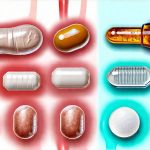The relationship between diet and bladder health is often overlooked, but emerging research suggests a significant connection. Many individuals experience unexplained urgency, frequency, or discomfort in their bladder, symptoms that can dramatically impact quality of life. While infections, neurological conditions, and other medical factors are frequently investigated as the root cause, an increasing number of cases point to dietary sensitivities – specifically reactions to food preservatives – as potential triggers for bladder sensitivity. Understanding this link is crucial because identifying and eliminating these trigger foods may offer relief where conventional treatments fall short.
Bladder sensitivity isn’t a single, well-defined condition; it’s more accurately described as a cluster of symptoms indicating an overactive or irritated bladder. This irritation can stem from various sources, making diagnosis challenging. Foods containing certain preservatives are hypothesized to exacerbate these issues because the body metabolizes them into compounds that irritate the bladder lining, triggering inflammation and nerve sensitivity. These effects aren’t always immediate; they can develop gradually with ongoing exposure, making it difficult for individuals to pinpoint the culprit foods. The complexity of this interaction highlights the need for a deeper dive into how specific food additives may impact bladder health and what steps can be taken to manage these sensitivities.
Food Preservatives & Bladder Irritation: A Closer Look
The mechanisms by which food preservatives might contribute to bladder sensitivity are still being investigated, but several theories exist. One prominent hypothesis revolves around the metabolic breakdown of certain preservatives into irritating compounds. For example, sulfites – commonly used in dried fruits, wine, and processed foods – can be converted into sulfur dioxide, a known irritant. Similarly, benzoates, found in carbonated beverages and jams, may trigger inflammation when metabolized. These compounds aren’t inherently harmful to everyone, but individuals with pre-existing bladder sensitivities or conditions like Interstitial Cystitis (IC) may be particularly vulnerable to their irritating effects. Individual susceptibility plays a significant role, as some people are more sensitive than others.
Another factor is the potential for preservatives to disrupt the gut microbiome. A healthy gut microbiome is essential for overall health, including immune function and inflammation regulation. Disruptions to this delicate ecosystem can lead to increased intestinal permeability (“leaky gut”), allowing inflammatory compounds to enter the bloodstream and potentially reach the bladder. This systemic inflammation can then exacerbate bladder symptoms. Preservatives aren’t always the direct cause of a disrupted microbiome; however, they can contribute to imbalances alongside other factors like antibiotics or dietary habits.
Finally, certain preservatives are known histamine liberators. Histamine is a chemical involved in immune responses and allergic reactions. In individuals with histamine intolerance, their bodies struggle to break down histamine efficiently, leading to a buildup that can cause a wide range of symptoms, including bladder urgency and discomfort. Preservatives like benzoates and artificial colors have been linked to histamine release, potentially worsening symptoms for those predisposed to histamine sensitivity. This is why keeping a detailed food diary alongside symptom tracking can be incredibly helpful in identifying potential triggers. Can Food Sensitivities Trigger Prostatitis Symptoms? can provide further insight into the complex relationship between diet and inflammation.
Identifying Common Culprits & Dietary Strategies
Several food preservatives are frequently implicated in bladder irritation. Sulfites, as mentioned earlier, are common offenders and can be found not only in dried fruits and wine but also in processed meats, salad dressings, and even some medications. Benzoates, prevalent in soft drinks, pickles, and fruit juices, are another concern. Artificial colors (like tartrazine – Yellow #5) and flavors, often present in candies, baked goods, and packaged snacks, have been linked to histamine release and bladder symptoms in susceptible individuals. It’s important to remember that “natural” doesn’t always equate to “safe”; some natural preservatives like ascorbic acid (Vitamin C), while generally benign, can be irritating for sensitive bladders when consumed in large quantities.
A dietary strategy focused on elimination and reintroduction is often the most effective approach. This involves removing potentially triggering preservatives from your diet for a period of time – typically 2-4 weeks – to see if symptoms improve. Then, foods are reintroduced one at a time, carefully monitoring for any recurrence of bladder discomfort. This process requires diligence and careful label reading. Many processed foods contain hidden preservatives, so focusing on whole, unprocessed foods is key. Consider opting for fresh fruits and vegetables, lean proteins, and whole grains. When purchasing packaged goods, look for products labeled “preservative-free” or with minimal additives. Consulting a registered dietitian can provide personalized guidance and support throughout the elimination diet process. Can Energy Drinks Worsen Bladder Sensitivity? is important to consider as well, given their high preservative content.
Understanding Histamine & Bladder Sensitivity
Histamine intolerance is gaining recognition as a potential contributor to bladder sensitivity in some individuals. As previously mentioned, histamine is a chemical released by the body during allergic reactions and immune responses. Normally, an enzyme called diamine oxidase (DAO) breaks down histamine, maintaining a healthy balance. However, when DAO activity is insufficient – due to genetic factors, gut dysbiosis, or other health conditions – histamine levels can build up, leading to various symptoms including headaches, skin rashes, digestive issues, and bladder problems.
- Foods high in histamine include fermented foods (sauerkraut, kimchi), aged cheeses, smoked meats, spinach, tomatoes, and avocados.
- Preservatives like benzoates and artificial colors can further exacerbate histamine intolerance by triggering histamine release.
- Identifying and reducing histamine intake is crucial for managing symptoms. This often involves following a low-histamine diet under the guidance of a healthcare professional.
The Role of Gut Health & Bladder Function
The gut microbiome plays a vital role in overall health, including bladder function. A healthy gut microbiome supports immune regulation, reduces inflammation, and enhances nutrient absorption. Disruptions to this delicate ecosystem – caused by factors like antibiotics, poor diet, or stress – can lead to increased intestinal permeability (“leaky gut”). This allows inflammatory compounds to enter the bloodstream and potentially reach the bladder, triggering irritation and symptoms of overactive bladder.
- Probiotics (beneficial bacteria) may help restore a healthy gut microbiome and reduce inflammation.
- Prebiotics (fibers that feed beneficial bacteria) can further support gut health. Sources include garlic, onions, bananas, and asparagus.
- Reducing processed foods, sugar, and artificial sweeteners can also contribute to a healthier gut environment. Can Sitting Cross-Legged Worsen Bladder Pressure? highlights how even seemingly innocuous habits can impact bladder health.
Navigating Label Reading & Hidden Preservatives
Successfully identifying trigger preservatives requires meticulous label reading. Many food products contain hidden preservatives that aren’t immediately obvious. Terms like “natural flavoring” or “spice extract” may mask the presence of additives. It’s essential to scrutinize ingredient lists carefully and familiarize yourself with common preservative names.
- Look for ingredients like sodium benzoate, potassium sorbate, sulfites (sodium sulfite, sodium bisulfite), BHA, BHT, and artificial colors (FD&C Blue #1, Yellow #5).
- Be wary of products marketed as “sugar-free” or “diet” as they often contain artificial sweeteners that can also contribute to bladder irritation.
- When in doubt, choose whole, unprocessed foods whenever possible. Preparing meals at home allows for greater control over ingredients and reduces exposure to potentially irritating additives. Can a Full Bladder Trigger Pain in Women? can help understand how bladder capacity impacts sensitivity levels.
Disclaimer: This article provides general information only and should not be considered medical advice. If you are experiencing bladder sensitivity or other health concerns, please consult with a qualified healthcare professional for diagnosis and treatment.





















